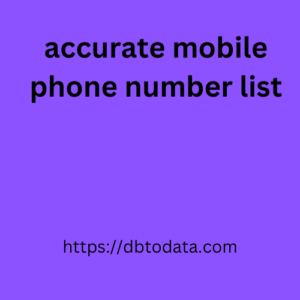WordPress is a powerful blog and content management system with the potential to help your online presence thrive. But like much of technology that surrounds us, the more effort you put into it, the greater the rewards. When you’re new to the experience, you may make some common WordPress mistakes. Luckily, many of the most common mistakes are avoidable.
This article will expose some of the common roadblocks and pitfalls in order to help you sidestep them. Knowledge is power, so read on to make the most of your new WordPress website.
Avoid these Common WordPress Mistakes
There’s a lot of cogs in the machine that is WordPress. If you want a smooth, appealing, and functional website, you need to make accurate mobile phone number list sure they’re all turning correctly.And although there is quite a bit to this platform, most mistakes are easy to avoid and simple to adjust.
1. The Wrong Platform Choice
Many of us who want to run quality content: how to measure quality our own blogs without selling anything will end up choosing a self-hosted WordPress website. That’s a WordPress download that runs on a hosting platform, like GreenGeeks. A self-hosted WordPress installation gives you complete control over development and recurring costs.
But that set up can be frustrating for someone who simply wants to run a blog for family and friends to read. If you’re interested in writing content for revenue, you’re subject to the same frustrations with the free version of WordPress.
This is one of the more usa cfo common WordPress mistakes. It’s always best to make a comparison and choose the right platform from day one. That will prevent moving headaches and a possible domain name change in the future.
2. Falling for the Up-Sell
There are only two things you need to run your self-hosted WordPress blog: a domain name and web hosting. But a lot of web hosting companies try to sell you unnecessary add-ons or gimmicks. But those add-ons can be expensive and can even hinder your progress later down the road.
Look for a WordPress hosting provider that doesn’t try to sell you apps or features that you don’t need.
3. Not Deleting Sample Pages
In the world of common WordPress mistakes, failing to delete the sample posts and pages ranks up near the top. More than a million WordPress sites still have the default “Hello world” post and sample pages publicly available.
Those pages will show up when visitors browse, and worse, in Google search results for your site. They’re easy to delete, so be sure to remove them.
4. Not Replacing the Default Tag Line
Like the sample pages, WordPress also configures a default tag line, “Just another WordPress site.” That tag line is also indexed by Google, and odds are, that’s not how you want your site to be known.
It’s a common mistake for beginners, so be sure to change the tag to something relevant to your site. If you don’t have a suitable replacement for “Just another WordPress site,” it’s okay to leave the tag line blank.
5. Failing to Create WordPress Backups
This should be close to the top of your WordPress best practices list. Keeping backups of your WordPress website is essential.
You may never have to use a backup, but keeping a recent backup will prevent your work from being wiped out and lost forever.
Accidents happen, especially when working with a new or unfamiliar system. It’s possible to delete important data yourself, or you could fall victim to hackers or another disaster outside of your control. Whatever the cause, the result can be corrupt or lost data.

